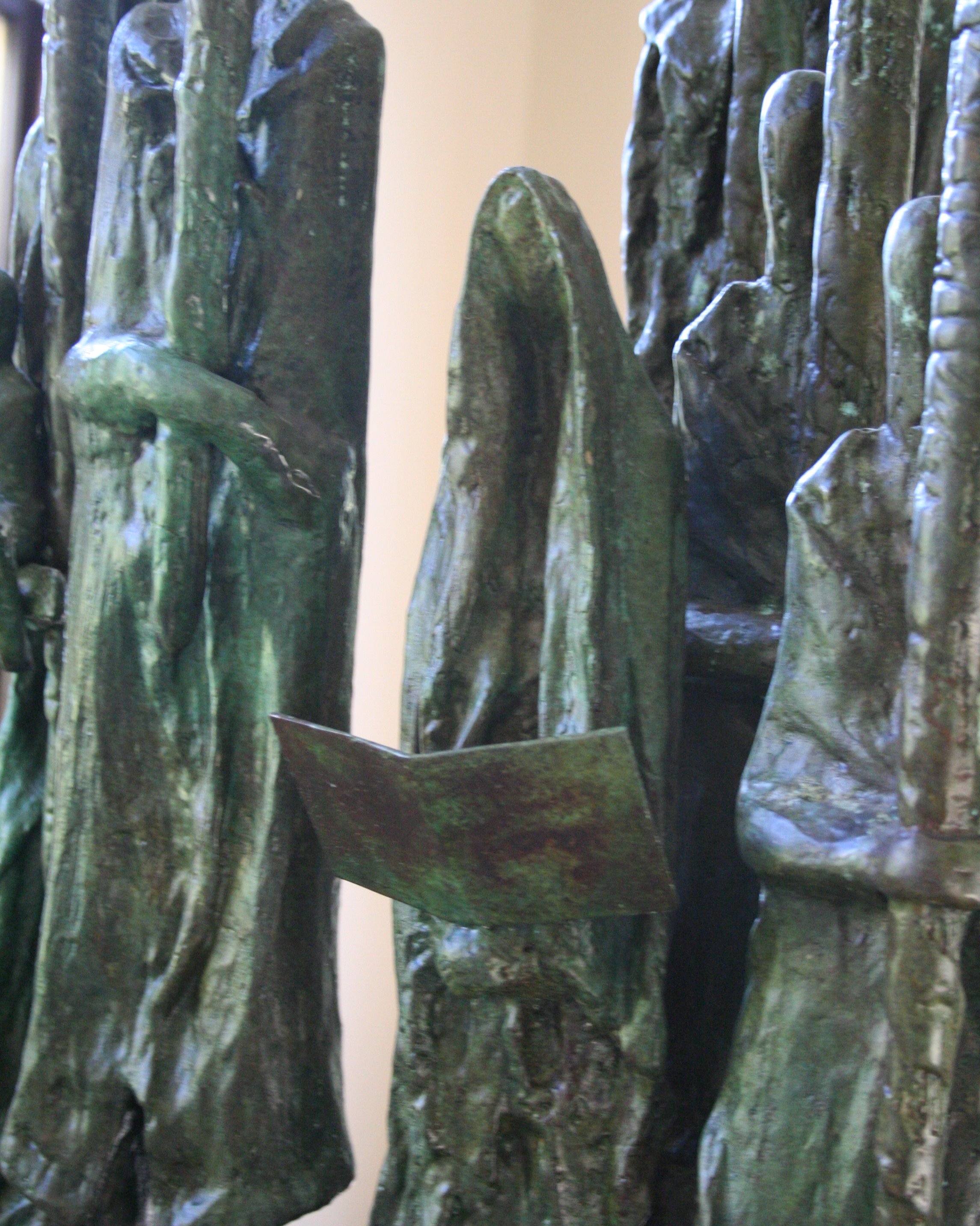In Trust is grateful to the Henry Luce Foundation for generous support of coverage on interfaith and intercultural issues in theological education.
 |
| Yom Hashoah Menorah (detail) St. Mary's Seminary and University, Baltimore, Maryland |
The relationship between Christians and their non-Christian neighbors is a tender topic, to be sure. Many Christians are convinced of a biblical and moral obligation to share the Gospel with all people who have not confessed faith in Jesus Christ. Other Christians feel that evangelism shows a lack of respect for the beliefs and traditions of other people, and that loving one's neighbor may mean leaving them alone. Still others hold that evangelism per se is not the problem — the problem is the uncharitable way in which it has sometimes been practiced.
In Trust member schools, and their trustees and administrators, differ widely on this topic, but perhaps there is a meeting point even among our diverse readers: knowledge. Getting to know our neighbors — including those who do not share our Christian beliefs — is surely the first step toward mutual respect. And getting to know our neighbors — really know them, including their values and world view — also underlies the agape that should motivate all evangelism conducted in the right spirit.
This issue's feature article by Heather Grennan Gary, explores how theological schools are getting to know their non-Christian neighbors. Some of these schools are on the left edge of the theological spectrum, but their lessons can be valuable even to more conservative seminaries. Knowledge can lead to partnerships, and such partnerships need not compromise a school's mission.
About the cover image
St. Mary's, founded in 1791, is the oldest Catholic seminary in the United States. In 2001, the Interreligious Information Center of New York and the Center for Interreligious Understanding of Secaucus, New Jersey, presented this menorah to St. Mary's to acknowledge and celebrate growing ties between Catholics and Jews. Commemorating lives lost in the Holocaust, it is a duplicate of the identical menorahs created by Gunther Lawrence and sculpted by Aharon Bezalel for the North American College in Rome and for Pope John Paul II.
|
The kinds of cooperative ventures found on the following pages do not happen by accident, and they call for vigorous leadership among those who share governance — board, faculty and administration. Before interfaith activities proceed, all governance partners should be clear about the school's mission. Board members should ask hard questions: Will interfaith cooperation be a distraction from the school's real mission, or is interfaith cooperation part of the school's mission? Will cooperation strengthen or weaken the school's economic vitality? Do the school's various constituencies — students, faculty, administration, denomination, alumni, and major donors, among others — understand what is at stake?
Interfaith cooperation can give a school a new burst of energy. It can open the doors to new ideas, new programs, new students. It can become the basis for rejuvenated service and evangelism. And for some schools, cooperation may even help the bottom line. But in all cases, board members themselves need knowledge and wisdom so that they can help lead their schools to greater knowledge, more sincere love of neighbor, and more effective labor in God's harvest field.